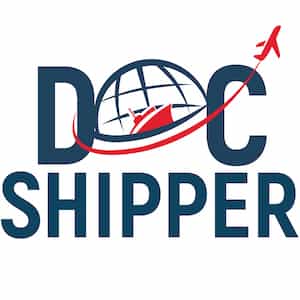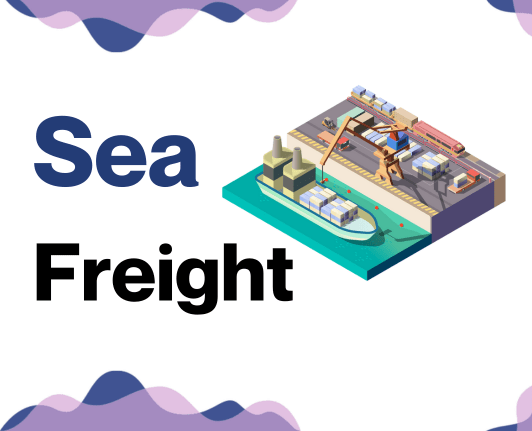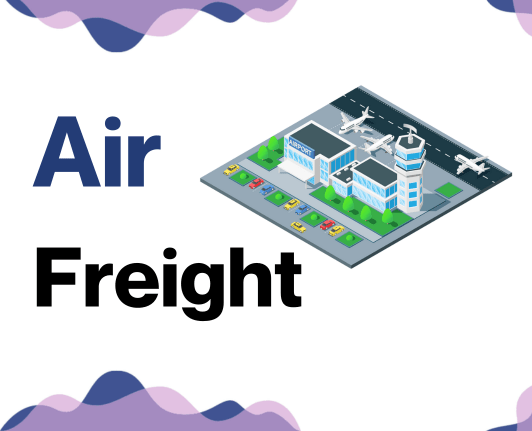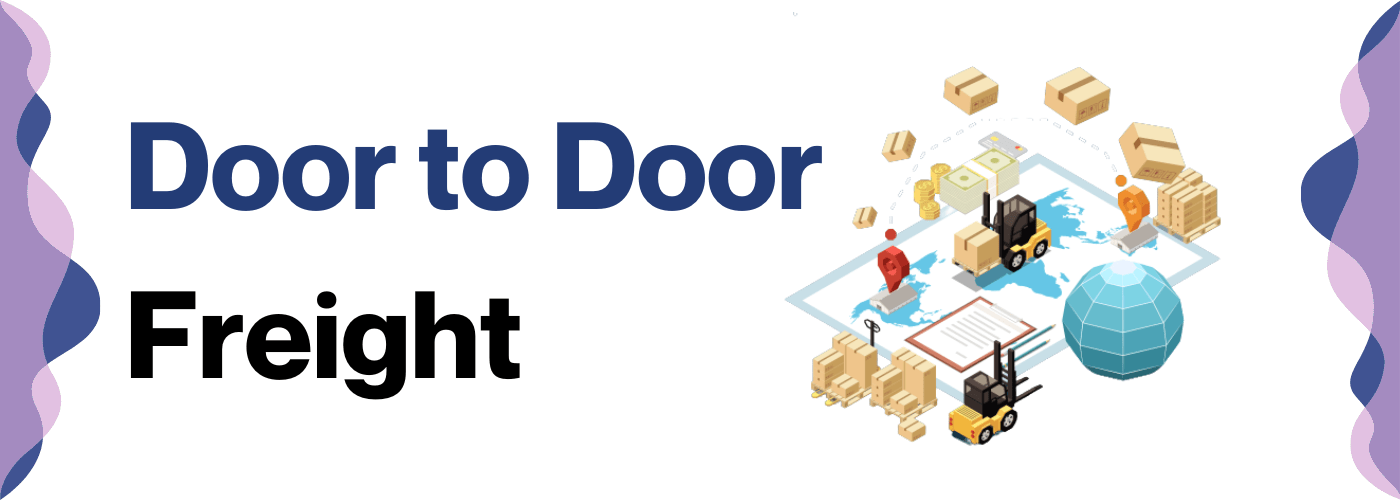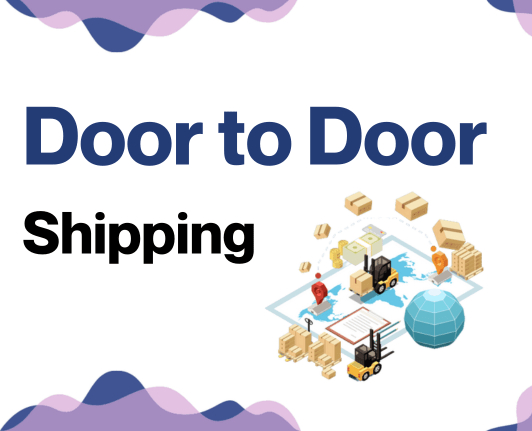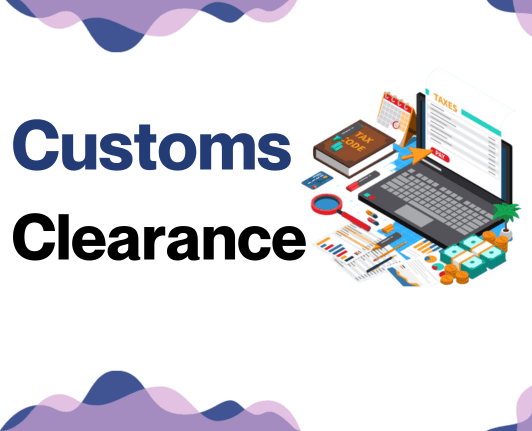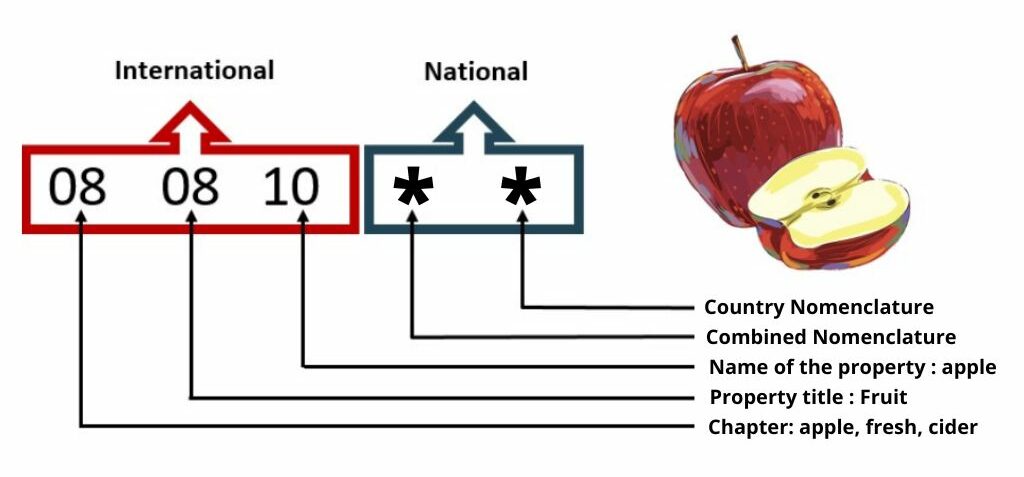Ever felt like shipping freight from Malaysia to Norway is harder than finding a polar bear in a snowstorm? You're not alone! Understanding freight rates, transit times, customs rules, and regulations can be as perplexing as a multilayered Norwegian kransekake. This comprehensive guide is designed to demystify the process. We'll dive into freight options - be it air, sea, road, or rail, and decode the customs clearance process, including duties and taxes. Expect tangible advice tailored specifically to aid your business smoothly traverse the intricacies of cross-border freight transport. If the process still feels overwhelming, let DocShipper handle it for you! As your committed international freight forwarder, we master every step of the shipping process, turning potential hurdles into stepping stones for your commercial success.
Table of Contents
Which are the different modes of transportation between Malaysia and Norway?
Understanding the best way to ship goods from Malaysia to Norway is akin to fitting pieces of a puzzle together. Imagine you have a vast sea and distances equivalent to the length of continents between you and your desired destination.
Will you sail or fly? Each comes with its pros and cons. It's a bit like choosing between a marathon and a sprint. Knowing these options and their implications, your business can solve this complex geographical puzzle and smartly connect these distant lands whilst minimizing costs and maximizing efficiency. The right choice could make all the difference.
How can DocShipper help?
Facing complexities in shipping from Malaysia to Norway? Partner with DocShipper! Our experts handle all the nitty-gritty details, from transportation logistics to customs procedures, making your shipping process hassle-free. Don't let borders be a barrier to your business growth. Want a free estimate within 24 hours or chat with our consultants? Reach out today!
DocShipper Tip: Sea freight might be the best solution for you if:
- You're dealing with hefty quantities or oversized goods. Sea transport is your go-to for maximizing space without stretching your budget.
- Time sensitivity isn't a concern for your shipment. Ocean freight is known for its leisurely pace, especially when compared to the speed of air or rail.
- Your supply chain connects key international harbors. This positions you to take full advantage of a wide-reaching network of ocean trade routes.
Sea freight between Malaysia and Norway
Ocean shipping forms a significant link in the trade chain between Malaysia and Norway, connecting vibrant industrial hubs through bustling sea ports like Port Klang and Port of Oslo. With the vast distance between these two nations, sea freight stands as a cost-effective choice when shipping high-volume goods. However, it might test your patience, as it is the slowest shipping method.
Most shippers and businesses will nod in agreement when we say that shipping between these countries is akin to threading a needle. It's filled with intricate procedures that often lead to costly mistakes. But fear not, because the sea of complexities has navigational buoys. In this section, we'll dive into best practices and clear-cut specifications designed to turn a challenging voyage into a smooth sail. So, whether you're a shipping veteran or a novice, there's value to be found, all aimed at making your sea freight journey between Malaysia and Norway as breezy as a coastal promenade.
Main shipping ports in Malaysia
Port of Klang
Location and Volume: Situated on the west coast of Peninsular Malaysia, the Port of Klang plays a crucial role in the country's import and export activities with a shipping volume that exceeds 10 million TEU each year.
Key Trading Partners and Strategic Importance: Close trading partners include China, Singapore, and Australia. The Port of Klang serves as Malaysia's busiest port and is the 12th busiest port in the world.
Context for Businesses: For enterprises seeking to penetrate the Asian markets, the strategic location and high handling capacity of the Port of Klang provide an outstanding hub for their supply chain.
Port of Tanjung Pelepas
Location and Volume: Located in the state of Johor in Malaysia, the Port of Tanjung Pelepas is one of the fastest-growing ports in the world with a shipping volume that reached 8 million TEU in recent years.
Key Trading Partners and Strategic Importance: Its key trading partners include China, the European Union, and the USA. As the second busiest port in Malaysia, it holds strategic importance due to its proximity to the Strait of Malacca, one of the world's most vital shipping lanes.
Context for Businesses: The Port of Tanjung Pelepas is an excellent choice for businesses intending to leverage the East Asia trade routes efficiently or requiring extensive shipping facilities.
Penang Port
Location and Volume: This port is located in the Malaysian state of Penang, and it handles around 1.5 million TEU annually.
Key Trading Partners and Strategic Importance: Crucial trading partners include China, India, and Japan. The Penang Port is strategically important, serving as a significant link in the pan-Asian trade network, offering connections to more than 200 ports worldwide.
Context for Businesses: If you're planning to expand your business supply chain across Asia, Penang Port's direct connections to numerous international destinations might be essential for your business growth.
Johor Port:
Location and Volume: Found in the southern end of the Malay Peninsula, Johor Port has an annual shipping volume of over 1 million TEU.
Key Trading Partners and Strategic Importance: Johor Port's main trading partners involve countries such as Indonesia, Vietnam, and Thailand. The port is known as the country's first multi-purpose port, serving as a pivotal hub for Malaysia's southern region.
Context for Businesses: If you're focusing on expansion within the ASEAN region, Johor Port's specialized handling and extensive connectivity might prove beneficial to your business logistics.
Bintulu Port
Location and Volume: Located in Sarawak, East Malaysia, Bintulu Port handles a volume that exceeds 10 million tons of cargo annually.
Key Trading Partners and Strategic Importance: This port's primary trading partners are China and Indonesia. The Bintulu Port is strategically important due to its access to rich local resources and proximity to major international shipping paths.
Context for Businesses: Businesses looking to capitalize on the rich natural resources of East Malaysia might find Bintulu Port a critical component of their shipment strategy.
Kuantan Port:
Location and Volume: Situated on the east coast of Peninsular Malaysia, Kuantan Port deals with nearly 30 million tons of cargo per annum.
Key Trading Partners and Strategic Importance: Its primary trading partners are China, India, and Australia. It is strategically important because of its easy access to the South China Sea trading routes.
Context for Businesses: If you're seeking to tap into markets linked to the South China Sea, then Kuantan Port's strategic positioning and capabilities can serve as a useful gateway for your endeavors.
Main shipping ports in Norway
Port of Oslo
Location and Volume: Located at the head of the Oslofjord in southeastern Norway, this port is central to trade in Scandinavia with a shipping volume of 6.4 million tons annually.
Key Trading Partners and Strategic Importance: The Port of Oslo's key trading partners are primarily found in the European Union, specifically in Germany, Netherlands, and the United Kingdom. Its strategic importance is emphasized by its modern facilities, such as the Sjursøya container terminal, capable of handling large vessels.
Context for Businesses: If you're looking to expand your business in the European market, especially within Scandinavia, the Port of Oslo could significantly streamline your logistics, given its extensive connections to major European hubs.
Port of Kristiansand:
Location and Volume: Found in the Southern part of Norway, this port boasts a shipping volume of about 1.5 million tons per annum.
Key Trading Partners and Strategic Importance: With strong ties to EU nations and several non-European countries, the port's strategically important Color Line ferry service contributes significantly to its cargo volume.
Context for Businesses: The Port of Kristiansand can be a valuable component of your shipping process if you're targeting European markets, particularly with its efficient and extensive ferry services.
Port of Bergen
Location and Volume: Situated in southwestern Norway, the Port of Bergen records an average shipping volume of 4.5 million tons annually.
Key Trading Partners and Strategic Importance: It mainly trades with European countries, solidifying itself as a reliable conduit for the distribution of seafood worldwide.
Context for Businesses: If your operations heavily involve seafood or other marine products, the Port of Bergen's sophisticated infrastructure and logistics services might enhance your trade routes.
Port of Stavanger
Location and Volume: Based in the southwestern part of Norway, this port handles a shipping volume of around 3.8 million tons annually.
Key Trading Partners and Strategic Importance: Stavanger primarily trades with EU nations, offering valuable logistics services and boasting advanced cargo-handling facilities.
Context for Businesses: Aiming to connect with European markets, especially for imports and exports of oil-related products? The Port of Stavanger, being the center of Norway's oil industry, might be the ideal port for your business.
Port of Tromso
Location and Volume: Located in the northern part of Norway, the Port of Tromso manages an annual shipping volume of about 1.3 million tons.
Key Trading Partners and Strategic Importance: Its trading partners span across Europe, Russia, and Asia. The port acts as a crucial logistics hub in the Arctic region due to its location.
Context for Businesses: If you seek to tap into markets in the Arctic region while leveraging Europe-Asia trade routes, the Port of Tromso, with its strategic location and diverse connections, could be instrumental to your logistics strategy.
Port of Molde
Location and Volume: Located in the western part of Norway, the Port of Molde handles a shipping volume of about a million tons annually.
Key Trading Partners and Strategic Importance: The port facilitates trade mostly with other European countries, boasting a specialized a high-speed ferry service to several Nordic destinations.
Context for Businesses: If your business is seeking efficient routes to Nordic countries, the Port of Molde, with its regular high-speed ferry services, could be well-suited to your shipping needs.
Should I choose FCL or LCL when shipping between Malaysia and Norway?
Making heads or tails of sea freight options between Malaysia and Norway? Here's the scoop: You've got two main choices - Full Container Load (FCL) and Less than Container Load (LCL), often called consolidation. The method you pick can make or break your shipping experience, affecting your costs, delivery speed, and overall success. So, let's dive in to see how these options compare and help you make an educated decision that fits the unique needs of your shipment. Ready? Let's sail!
LCL: Less than Container Load
Definition: LCL or less than container load shipping refers to the transportation of small quantities of cargo that doesn't warrant a full container's space. It's comparable to carpooling for freight, where goods from different suppliers share the same container space.
When to Use: Choosing LCL shipping becomes a smart move when your cargo volume is less than 15 cubic meters (CBM). This option provides flexibility as you only pay for the space you use, and it's ideal for low-volume shipments.
Example: Consider a factory in Kuala Lumpur wishing to ship a batch of electronic components to a buyer in Oslo. If the batch amounts to just 10 CBM - an insufficient amount to fill a container - the factory could opt for an LCL shipment. This way, the goods will share container space with shipments from other businesses, keeping the freight costs under control.
Cost Implications: On the cost front, LCL freight is typically less expensive than hiring a full container for low-volume cargo. However, it could also mean having potentially higher handling fees at both origin and destination ports due to the deconsolidation of the goods from the container. Despite this, LCL shipping can result in more cost-effective logistics for small shipments.
FCL: Full Container Load
Definition: FCL shipping, or 'Full Container Load', refers to a shipping method where an entire container (usually a 20'ft or 40'ft container) is exclusively used for a single cargo owner's shipment.
When to Use: You should opt for FCL when your cargo volume is more than 13 to 15 cubic meters (CBM), this is approximately half the capacity of a 20'ft container. The primary reasons being cost-effective for high-volume shipments and increased safety as the container remains sealed from origin to destination, reducing the risk of damage.
Example: Let's say, for instance, you own a furniture business and need to ship 200 chairs from Kuala Lumpur, Malaysia, to Oslo, Norway. Given the collective volume of the chairs exceeds 15 CBM, utilizing FCL shipping ensures the goods are safely enclosed within your own container, facilitating safe transit and potential cost savings.
Cost Implications: The overall price in FCL shipping may seem high initially, but when you evaluate it on a cost-per-unit basis, it’s often cheaper than LCL. Also, remember to request an FCL shipping quote for exact amounts as costs vary based on origin, destination, and cargo specifics.
Unlock hassle-free shipping
Make ocean shipping between Malaysia and Norway smooth with DocShipper, your freight forwarding companion. Our experienced team can guide your choice between consolidation or full containers, considering your budget, load size, and delivery speed needs. Trust us to simplify the complexity out of global shipping. Ready for hassle-free cargo movement? Reach out for a no-obligation, free cost estimation today.
How long does sea freight take between Malaysia and Norway?
On average, sea freight between Malaysia and Norway tends to range from 30 to 40 days. However, the exact transit time is influenced by a variety of factors, such as departure and arrival ports, the weight and nature of the goods being transported. To acquire a more comprehensive assessment, we recommend businesses to reach out to a freight forwarder like DocShipper for an elaborate and tailored quotation.
| From (Malaysia Ports) | To (Norway Ports) | Average Transit Time (Days) |
|---|---|---|
| Port Klang, Malaysia | Oslo, Norway | 28 days |
| Port Klang, Malaysia | Bergen, Norway | 31 days |
| Tanjung Pelepas, Malaysia | Oslo, Norway | 29 days |
| Tanjung Pelepas, Malaysia | Bergen, Norway | 32 days |
Please note, these are average times and actual times may vary. For a more accurate quote tailored to your specific needs, contacting a professional freight forwarder is advised.
How much does it cost to ship a container between Malaysia and Norway?
Eager to know how much it costs to ship a container from Malaysia to Norway? The cost might fall anywhere between a broad price range per CBM - a specific figure isn't feasible due to variables such as Point of Loading, destination, the carrier, the nature of goods, and monthly market swings. These dynamics mean ocean freight rates and shipping costs aren't one-size-fits-all, they're bespoke. Don't fret! Our seasoned shipping specialists are on standby to crunch the numbers and provide you with the most competitive rates tailored to your unique shipping scenario. At the end of the day, your best quote is always a personalised one.
Special transportation services
Out of Gauge (OOG) Container
Definition: An OOG container is specifically designed to transport exceptionally large items that don't conform to standard shipping container sizes and dimensions.
Suitable for: Heavy machinery, industrial equipment, large vehicles, or any oversized out of gauge cargo that exceeds standard container measurements.
Examples: Construction materials like girders or large Conveyor belts, heavy plant machinery, or wind turbine blades.
Why it might be the best choice for you: If your business deals in large, non-standard sized manufacturing or construction elements, the flexibility and capability these containers offer could help mitigate logistical challenges.
Break Bulk
Definition: Break bulk refers to the handling and shipping of goods individually or in batches, not enclosed in containers. The term loose cargo load refers to this method as well.
Suitable for: Different sizes of cargo, often massive or weighty, that are difficult or unsuitable to fit into containers.
Examples: Steel girders, wood logs, construction equipment, large manufacturing components.
Why it might be the best choice for you: Break bulk can offer more flexibility than other shipping methods due to its ability to handle variously sized and shaped cargo that may not conveniently fit in containers.
Dry Bulk
Definition: Dry bulk shipping refers to the loading of finer, loose commodities directly into the vessel’s storage compartments.
Suitable for: Bulk goods such as grains, coal, minerals, or other similar items.
Examples: Rice, coffee beans, raw minerals, cement, or grains.
Why it might be the best choice for you: If your business involves dealing with large quantities of homogenous goods, Dry Bulk can offer an efficient transportation solution.
Roll-on/Roll-off (Ro-Ro)
Definition: Ro-Ro is a shipping method where vehicles and machinery are driven on and off a specially designed ro-ro vessel.
Suitable for: Cars, trucks, tractors, trailers, buses, or other self-propelled or towable machinery.
Examples: New or used automobiles, large farming equipment or tractors, mobile cranes, or motorhomes.
Why it might be the best choice for you: If your business requires the transportation of wheeled cargo, Ro-Ro's streamlined process might be perfect to ensure safe and efficient transportation.
Reefer Containers
Definition: Reefer containers are temperature-regulated shipping containers designed to maintain a specific internal climate.
Suitable for: Perishable goods including fresh or frozen food, pharmaceuticals, or any other items requiring precise temperature control.
Examples: Fresh fruits and vegetables, meats, seafood, dairy products, or temperature-sensitive medicines.
Why it might be the best choice for you: If you deal in perishable goods or temperature-sensitive items, reefer containers can provide the necessary controlled environment for safe shipping.
At DocShipper, we appreciate the unique shipping requirements for different businesses. Remember, we’re here to help you figure out the optimal way for your specific shipping needs. Contact us for a free shipping quote in less than 24h — we'd be happy to help you navigate these waters.
DocShipper Tip: Air freight might be the best solution for you if:
- You're pressed for time or facing a non-negotiable deadline. Air freight delivers unparalleled speed when it comes to transit times.
- Your shipment is modest in size, falling under 2 CBM. Air freight is particularly well-suited for these smaller consignments.
- Your supply chain includes destinations that are off the beaten maritime or rail paths. Air freight gives you access to a comprehensive global airport network.
Air freight between Malaysia and Norway
In the bustling world of trade, fast and reliable transport options are vital, especially when shipping from Malaysia to Norway. Air freight proudly wears the crown! Ideal for compact, high-value shipments like electronics or luxury items, it's like your own high-speed express train in the sky. But many businesses stumble when it comes to air freight. It's like baking a cake without the right recipe - if you miscalculate the weight of your goods or overlook best practices, the result can be costly. So, let's roll up our sleeves and unravel this intricate art of air freight! Remember, perfect planning prevents poor performance. Stay tuned!
Air Cargo vs Express Air Freight: How should I ship?
Looking to streamline your shipping from Malaysia to Norway fast and efficiently? Then it's worth understanding air cargo and express air freight. Air cargo rides with other consignments on a commercial airliner, while express flies out on a dedicated plane for quicker delivery. Read on for an in-depth look at which of these might be just the ticket for your business.
Should I choose Air Cargo between Malaysia and Norway?
Air cargo between Malaysia and Norway might just tick all your boxes if you're seeking cost-effectiveness and reliability. With prominent airlines like Malaysia Airlines and Scandinavian Airlines (SAS) dedicated to freight services, you can expect competitive rates and trustworthy services. Be mindful, longer transit times are a reality due to fixed flight schedules. Importantly, air cargo tends to become more appealing for loads above 100/150 kg (220/330 lbs), potentially aligning with your budgetary needs. So, could this be the ideal choice for your business?
Should I choose Express Air Freight between Malaysia and Norway?
Opting for Express Air Freight might just be your best choice when shipping lighter loads under 1 CBM or if your cargo is weighing less than 100/150 kg (220/330 lbs). This specialized service steps up to offer speedy, dedicated shipments with cargo-only planes. Globally recognized firms like FedEx, UPS, or DHL excel in this field, ensuring your freight from Malaysia to Norway lands promptly. This could be the perfect answer to your logistical needs when time is of utmost importance and your cargo volume won't warrant a larger transportation option.
Main international airports in Malaysia
Kuala Lumpur International Airport (KLIA)
Cargo Volume: Handled over 726,230 metric tons of cargo in 2019.
Key Trading Partners: Singapore, China, Japan, Australia, and India.
Strategic Importance: As one of Southeast Asia's major aviation hubs, it is perfectly positioned for businesses aiming to tap into the Asian markets.
Notable Features: 24/7 operational hours and state-of-the-art technology for efficient handling and safety assurance.
For Your Business: Its vast network of flights to over 120 countries can benefit your business, especially if you're looking to expand your reach across Asia and beyond.
Penang International Airport (PEN)
Cargo Volume: Over 172,000 metric tons of cargo passed through this hub in 2019.
Key Trading Partners: Thailand, Singapore, China, and Indonesia.
Strategic Importance: It serves as a key gateway to northern Malaysia and plays a significant role in the export of local manufactured items.
Notable Features: It's the nation's second busiest airport in terms of cargo traffic and features modern cargo facilities.
For Your Business: Due to its regular flights to Southeast Asia and beyond, it may be a cost-effective and efficient choice for reaching these markets.
Sultan Abdul Aziz Shah Airport (SZB)
Cargo Volume: It handles tens of thousands of metric tons of freight annually.
Key Trading Partners: Predominantly regional partners within Southeast Asia.
Strategic Importance: It is conveniently located in Subang, close to Kuala Lumpur, making it a handy alternative to KLIA for certain routes.
Notable Features: Its runway can handle smaller cargo planes, and the airport is open 24/7.
For Your Business: Its proximity to Malaysia's capital can provide a logically efficacious solution for quick, regional cargo shipments.
Kuching International Airport (KCH)
Cargo Volume: The airport has the capacity to handle 5,000 metric tons of cargo annually.
Key Trading Partners: Primarily Asian destinations, including Singapore, Hong Kong, and Jakarta.
Strategic Importance: This is the main gateway to the island of Borneo, and it plays a vital role in the transportation of locally produced goods.
Notable Features: Around-the-clock operations and customized solutions for cargo shipments.
For Your Business: If your business specializes in goods widely produced in East Malaysia, this airport could be a strategic connection for your supply chain.
Senai International Airport (JHB)
Cargo Volume: In 2019, this airport processed over 7,000 metric tons of cargo.
Key Trading Partners: Major Asian economic centers like Hong Kong, Singapore, and Shanghai.
Strategic Importance: Located in one of Malaysia's most industrialized states, Johor, Senai Airport plays a pivotal role in the region's freight shipping.
Notable Features: It houses a Free Trade Zone, offering potential tax advantages for companies.
For Your Business: If your operations benefit from duty exemptions, this airport, with its Free Trade Zone, could offer favorable conditions for your imports or exports.
Main international airports in Norway
Oslo Airport
Cargo Volume: Approximately 185,000 metric tons annually.
Key Trading Partners: Predominantly the Eurozone, Asia, and North America.
Strategic Importance: As the busiest airport in Norway, it serves as the main gateway for international cargo shipments.
Notable Features: Its state-of-the-art Air Cargo Terminal is equipped to handle diverse types of cargo with efficiency.
For Your Business: If your trade routes primarily involve the Eurozone, Asia, or North America, Oslo Airport's high-volume capacity and modern facilities could offer reliable solutions for your shipping needs.
Stavanger Airport
Cargo Volume: Unspecified for cargo specifically, but the airport handles over 4.6 million passengers annually.
Key Trading Partners: Major links include to the UK, Poland and several other countries across Europe.
Strategic Importance: The 3rd biggest airport in Norway, it boasts a significant amount of air traffic.
Notable Features: While passenger traffic is its primary focus, the airport also handles cargo shipments efficiently.
For Your Business: Its strategic location in the oil-rich region of Norway might be ideal if your business is related to the energy sector.
Bergen Airport
Cargo Volume: Specific cargo volume isn’t separately listed, but the airport serves about 6 million passengers annually.
Key Trading Partners: Links predominantly with European countries, with a few routes to key international destinations.
Strategic Importance: It is the second-largest airport in Norway, with frequent flights to/from European economic hotspots.
Notable Features: Although primarily a passenger airport, it accommodates cargo traffic with its robust infrastructure.
For Your Business: If most of your business dealings are in Europe, Bergen Airport’s extensive network could be a cost-effective and efficient option.
Trondheim Airport
Cargo Volume: No specific cargo volume is given, but it serves around 4.1 million passengers annually.
Key Trading Partners: Major European countries with regular flights to destinations like the UK, Spain, and The Netherlands.
Strategic Importance: Fourth largest airport in Norway, serving both domestic and international routes.
Notable Features: Its hybrid operations of handling both cargo and passenger flights allow it to serve a broad spectrum of logistic demands.
For Your Business: Trondheim Airport's hybrid model could provide your business with versatile shipping options, particularly if you regularly trade within Europe.
Tromsø Airport
Cargo Volume: Exact cargo numbers aren't listed, but Tromsø services over 2 million passengers per year.
Key Trading Partners: Links with European countries and some parts of Asia.
Strategic Importance: As Norway's top airport when it comes to the Arctic, Tromsø is strategically important for businesses interested in Arctic exploration and research.
Notable Features: While it largely focuses on passenger traffic, it also handles cargo shipments seamlessly.
For Your Business: If you have interests in the far North or your business works closely with Arctic-focused industries, Tromsø Airport provides a valuable connection point to this remote and significant region.
How long does air freight take between Malaysia and Norway?
Transit time for air freight between Malaysia and Norway averages around 6-8 days. However, remember this is variable, influenced by factors like specific departure and arrival airports, total weight, and the nature of the goods being shipped. For accurate, detailed timeframes tailored to your specific needs, consulting with a specialist freight forwarder like DocShipper is your best bet.
How much does it cost to ship a parcel between Malaysia and Norway with air freight?
The cost of shipping an air freight parcel from Malaysia to Norway can widely range between $5 to $15 per kilogram. However, assigning an exact cost is nuanced, as it depends on factors such as the distance between departure and arrival airports, parcel dimensions and weight, and the nature of the goods. Rest assured - our dedicated team crafts estimates on a case-by-case basis, tailoring the best rates to your unique needs. Contact us and receive a free quote in less than 24 hours.
What is the difference between volumetric and gross weight?
Gross weight refers to the overall weight of your shipment, including packaging, pallets, and goods. Volumetric weight, on the other hand, is a weight estimate that considers how much space your shipment will occupy in an aircraft.
Calculating these weights for Air cargo and Express Air Freight services differs slightly. For Air cargo, the volumetric weight is calculated by multiplying the dimensions of your shipment (length, width, and height in centimeters) and then dividing by 6,000. Express Air Freight services typically use a divisor of 5,000.
Suppose you're shipping a crate with dimensions of 100cm x 100cm x 100cm, and it weighs 150 kg. The volumetric weight for Air cargo would be (100 x 100 x 100) / 6,000 = 166.67kg (367lbs). For Express Air Freight, it would be (100 x 100 x 100) / 5,000 = 200kg (440lbs).
Despite your shipment’s gross weight being 150 kg (330lbs), the shipping cost will be calculated on the volumetric weight for both Air Cargo and Express Air Freight as it's higher.
This concept matters because freight charges are determined by whichever weight is higher, gross or volumetric. This ensures that carriers get paid for the space your shipment occupies, not just its physical weight. So, it's always good to have an understanding of both these weights for cost-effective shipping.
DocShipper tip: Door to Door might be the best solution for you if:
- You value convenience and want a seamless shipping process, as door-to-door takes care of every step from pickup to delivery.
- You prefer a single point of contact, as door-to-door services typically provide a dedicated agent to handle all aspects of the shipment.
- You want to minimize the handling of your goods, reducing the risk of damage or loss, as door-to-door minimizes transitions between different modes of transport.
Door to door between Malaysia and Norway
Exploring the convenience of international Door to Door shipping, today's focus zooms in on Malaysia to Norway routes. This mode ensures your shipment travels straight from the pickup location to the recipient, optimising cost and saving time. Perfect for businesses seeking seamless logistics, Door to Door shipping adds value by merging simplicity with efficiency. Ready to dive in? Let's explore how this could be your shipping solution!
Overview – Door to Door
Imagine passing the complex shipping process from Malaysia to Norway off your plate! That's door-to-door shipping. Here, you get a streamlined, stress-free logistics solution, despite the inherent challenges. This service eliminates daunting tasks like customs clearance and tracking multiple carriers, making it a hot favorite amongst our clients at DocShipper. Still, it might cost a bit more compared to other methods. However, if tranquility and efficiency attract you, door-to-door service can be your game changer in international shipping. Let's dive into the essence of it.
Why should I use a Door to Door service between Malaysia and Norway?
Ever walked into a room and wondered, Why did I come in here? That's how you could feel when navigating the labyrinth of international logistics – which is why you might love Door to Door service! Let's think of it as your logistics fairy godmother when shipping from Malaysia to Norway.
1. Stress-Be-Gone: Managing logistics can be as mind-boggling as trying to lick your elbow – yes, we're challenging you! Door to Door service takes this stress off your plate, letting them juggle the circus of shipping, customs clearance and more.
2. Swift Shipments: Ticking clocks sound scary? Not anymore! The service ensures timely delivery, cutting down any unnecessary time wastage in shipment handovers. Great for urgent shipments!
3. Specialized care: Have something complex to ship? Maybe a gigantic batch of Durian known for its peculiar smell, or specialized equipment. Fret not, Door to Door service is your bespoke delivery concierge providing specialized care.
4. Full-spectrum Management: From goods pickup to final delivery, every step is handled professionally – imagine your cargo on a VIP trip with its specialized agent!
5. Ultimate Convenience: Door to Door service handles the trucking details until the final destination. You can sit back, sip your tea, freeing you to focus on growing your business.
With Door to Door service, you won't just be shipping smarter, you'll be shipping with style and peace of mind! Take your business a step ahead, let professionals handle the maze, and say goodbye to shipping woes. Now, weren't these reasons worth walking into the room for?
DocShipper – Door to Door specialist between Malaysia and Norway
Experience worry-free shipping with DocShipper! From packing to transport, customs to delivery, we organise it all. Our expert team is skilled in managing transportation across borders, including between Malaysia and Norway. Enjoy the convenience of a dedicated Account Executive and comprehensive shipping solutions. Need a quote? Reach out today for a free estimate in less than 24 hours, or engage with our consultants at no cost. We’re here to simplify, economize, and streamline your logistics process. Set sail with DocShipper, where your shipment is our priority.
Customs clearance in Norway for goods imported from Malaysia
Jumping into international trade waters between Malaysia and Norway? Understanding customs clearance - the procedure of getting goods approved for import - is critical. It's a complex process, riddled with potential trapdoors like surprise fees and charges. From duties and taxes to quotas and licenses, there's a labyrinth of rules that, if not navigated correctly, could lead to your goods languishing in customs. Fear not, this guide will voyage into those depths, providing the know-how to bring your goods ashore safely. Remember, DocShipper is ready to steer you through this maze for any types of goods, anywhere. Need an estimate for your project? Reach out to our team with your goods' origin, value, and HS Code - these three elements are your ticket to an accurate cost overview. Let's set sail!
How to calculate duties & taxes when importing from Malaysia to Norway?
Understanding customs duties and taxes when importing from Malaysia to Norway can seem quite complex, but, with the right know-how, it becomes a manageable task. Primarily, these calculations hinge on several crucial factors including but not limited to the country of origin, the Harmonized System (HS) Code, the Customs Value, the Applicable Tariff Rate, and a host of other taxes and fees specific to the type of goods being imported.
The starting point for this process is pinpointing the country in which the goods were manufactured or produced, as this is a cardinal part of determining customs duties. Why is this point so important? Well, it directly impacts the tariff rate applied to your goods, impacting your overall cost and logistics strategy in a significant way. Be aware, though. Certain products may have additional taxes or fees, introduced to protect local industries or for environmental reasons, for example.
So, be sure to gather these key pieces of information, commence your import journey on a strong footing, and prepare for smooth sailing through the often choppy waters of international trade.
Step 1 - Identify the Country of Origin
Understanding the country of origin is a cornerstone for successful importing from Malaysia to Norway. Here are five reasons why:
1. Ease of Customs Clearance: Norway customs need to know where a product comes from. It helps in avoiding potential hold-ups.
2. Trade Agreements Impact: Norway and Malaysia don't have a direct free trade agreement. Norway follows EU's Generalised Scheme of Preferences (GSP) where Malaysia benefits under the GSP+ incentive.
3. Duty Rates Variation: Origin identifies the duty rate applicable. For a commodity like car parts, the duty under GSP+ could be 4.5%, compared to 10% otherwise.
4. Compliance with Import Restrictions: Some items, such as certain chemicals, have stringent import restrictions that depend on the origin.
5. Accurate Duty and Tax Estimation: It helps in calculating approximate import fees.
To accurately estimate duties and taxes, first nail down the concrete country of origin. You'll then need the Harmonized System (HS) code of the product. Bear in mind that, depending on the specifics of what you're importing, there might be other costs like VAT and excise duty to consider.
Don't overlook the details; they often make the difference between a smooth shipment and a delayed one. Happy shipping!
Step 2 - Find the HS Code of your product
The Harmonized System (HS) Code is a six-digit standard code developed by the World Customs Organization, primarily used in international trade to classify commodities. It's crucial for determining the import duties and taxes, as well as for customs clearance procedures.
Your supplier is often the best source to provide the accurate HS Code for your product, as they're highly familiar with the goods they're exporting and the related regulations.
But, in scenarios where making this query to the supplier isn't plausible, no need to worry – you can find the HS code of your product yourself by following these steps:
1. Visit the Harmonized Tariff Schedule website.
2. Enter the name of your product in the search bar.
3. Navigate to the Heading/Subheading column – this is where you'll find the HS code for your product.
It's important to note that accuracy is key when determining the HS Code. Inaccuracies could ultimately lead to unwelcome delays in shipping and possible fines, so it's crucial to get it right the first time around.
Here's an infographic showing you how to read an HS code. This visual aid will provide additional insight into understanding how these codes communicate specific details about your product.
Step 3 - Calculate the Customs Value
In setting the import duties and taxes for goods shipped from Malaysia to Norway, a crucial factor is the 'customs value.' This differs from the product's price tag because it encompasses more elements. Think of it as the total cost needed to bring your goods from the warehouse in Malaysia to the doorstep in Norway. The customs value equals the cost, insurance, and freight (CIF) value - the sum of your goods' price, the cost of international shipping, and insurance costs. For example, if your goods cost $1000, with shipping at $300 and insurance at $50, then the customs value would be $1350. This figure is what the Norwegian Customs will base their calculations on, making it a key determinant in your overall import expenditure.
Step 4 - Figure out the applicable Import Tariff
Import tariffs are the taxes or duties that have to be paid on goods being imported into a country, making them a crucial part of the customs clearance process. In Norway, which is part of the EU's customs territory, these tariffs are determined based on the product's Harmonized System (HS) code and the country of origin.
To identify your import tariff, use the TARIC System - European Customs tool. Let's say you're importing wooden furniture from Malaysia, which carries an HS code of 9403.30. Enter this code alongside 'Malaysia' as the country of origin to see the relevant duties.
For instance, the tool shows a 2.7% tariff rate. If your Cost, Insurance, and Freight (CIF) value is $10,000, your import duty would be $270 (2.7% of $10,000). This information is vital not only for legal compliance but also for accurately forecasting your overall costs. Understanding the importance of HS codes and using the TARIC system effectively can save both time and money, helping you navigate the complexity of international logistics with confidence.
Step 5 - Consider other Import Duties and Taxes
At this stage in the customs clearance process, it's crucial to be aware of additional import duties and taxes. Aside from the standard tariff rate—which may vary— certain goods might be liable for extra charges. For instance, excise duty can apply to products like alcohol or petroleum, which drastically depends on the nature of the product in question.
Look out for what we call 'anti-dumping duties'. This is a protective measure, employed when goods are sold below their usual value. For example, if a certain type of furniture is usually priced at $500 in Malaysia but it's being sold to Norway at $300, Norway might impose these duty fees to level the field for domestic manufacturers.
The crux of the matter, though, is the Value Added Tax (VAT). In Norway, for the majority of goods, the VAT rate is 25%. So, if your product is worth $2000, the VAT you'll pay is $500 (25% of $2000). Remember, these figures are just illustrative—the actual numbers could vary.
This stage might seem daunting, but comprehending these complex layers helps you anticipate total costs and can enhance your planning for successful importation. And while we've laid out these guidelines in general terms, they can vary in detail— always refer to a trusted customs broker or consultant for advice tailored to your specific situation.
Step 6 - Calculate the Customs Duties
Calculating customs duties on goods shipped from Malaysia to Norway involves considering several factors. First, you'll need to determine the customs value of your goods, which is the cost of the goods plus shipping and insurance costs.
To calculate customs duties, let's walk through an example with only customs duties but no VAT. Assume your customs value is $10,000. If the duty rate is 2%, your customs duty will be $200.
Now let's add VAT into the mix. In Norway, VAT for imported goods is 25%. For goods valued at $10,000 with a 2% customs duty of $200, the total taxable amount becomes $10,200. The VAT is then $2,550 ($10,200 25%).
Lastly, consider anti-dumping taxes and Excise Duty. For goods susceptible to anti-dumping duties, such as steel, an additional tax can be added. Let's say your steel is subjected to a 4% anti-dumping duty, which amounts to $408 ($10,200 4%). If your goods also have an Excise Duty of 10 USD/Kg and your shipment weighs 50 kg, the total Excise Duty becomes $500. Therefore, the total tax payable would be $3,658 ($200 customs duty + $2,550 VAT + $408 anti-dumping duties + $500 Excise Duty).
Calculating these dues can be complex and mistakes costly. At DocShipper, we're on hand to help with custom clearance services. We'll ensure you're never overcharged, with full insights into your costs. Secure a free quote in under 24 hours. Enjoy the peace of mind that comes with global expertise!
Does DocShipper charge customs fees?
DocShipper, as your customs broker in Malaysia and Norway, manages your customs clearance but it's important to clarify we don't charge customs duties! These are government-levied taxes. Think of it like a restaurant where your meal is paid separately from the service tip. We do charge a fee for our part - handling documentation, ensuring compliance, and seamless clearance. Rest assured, we provide all paperwork, straight from the customs office, ensuring transparency. You only pay what’s on the official bill! Straightforward, like it should be.
Contact Details for Customs Authorities
Malaysia Customs
Official name: Royal Malaysian Customs Department
Official Website: https://www.customs.gov.my/en
Norway Customs
Official name: Norwegian Customs (Tollvesenet)
Official website: http://www.toll.no/en
Required documents for customs clearance
Ever feel overwhelmed by the heap of papers needed for customs clearance? Worry no more! This section explores the Bill of Lading, Packing List, Certificate of Origin, and Documents of Conformity (CE standard). Each demystified, easing your path through the paperwork maze. Shipping has never been this straightforward!
Bill of Lading
Navigating customs between Malaysia and Norway? You'll need the Bill of Lading (BOL). Acting as a contractual handshake between you and the carrier, the BOL acts as your receipt and proof of ownership, making it a crucial part of your shipping toolbox. In the age of digital transformation, you might consider an electronic – or telex – release. It's quicker, reduces paperwork, and is an eco-friendly choice without the need for courier services. However, if your cargo is taking flight, you'll require an Air Waybill (AWB). In any case, always ensure your BOL or AWB is accurate to avoid customs delays. Remember, shipping is never a one-size-fits-all: consider your specific needs before choosing your document path.
Packing List
Picture this: A shipment of electronics from Malaysia bound for Norway but it's stalled at customs. Why? A missing Packing List! This list is your ticket to hassle-free shipping, whether by sea or air. As a shipper, it's your job to create an accurate Packing List, verifying the quantity, description, and weight of your goods. Maybe it's 200 smartphones or perhaps 50 laptops, whatever it is, it's got to be right on that list. If your list is off, even by a single item, it could lead to a delay - a setback that could cost you time and money in the logistics labyrinth. Remember, the Packing List isn't just paperwork, it's proof of what you’re shipping and a catalyst to a smooth customs experience across the Malaysian-Norwegian route.
Commercial Invoice
Navigating customs can be a complex process, and your Commercial Invoice is a key player. When shipping from Malaysia to Norway, the Invoice should clearly list comprehensive details like product description, total value, country of origin, and buyer/seller details. A crucial note to remember: inconsistency across shipping documents can trigger red flags for customs officials. So, always ensure your Commercial Invoice aligns perfectly with your Packing List and Bill of Lading. Imagine, for instance, your shipping 'handcrafted ceramic vases.' Your Invoice should not generalize these as 'decorative items.' Specificity and accuracy are your allies in ensuring smooth customs clearance. A well-prepped Commercial Invoice not only fast-tracks clearance but also helps avoid unforeseen costs. So, keep everything in shape, from the minutest detail to overarching document alignment.
Certificate of Origin
When shipping goods from Malaysia to Norway, your Certificate of Origin is akin to your product's passport. This document is crucial as it validates the goods being shipped were manufactured in Malaysia, thus making it eligible for preferential customs duty rates Norway may offer to Malaysian-made goods. For example, a Malaysian electronics manufacturer exporting laptops to Norway could enjoy reduced customs duties, lowering their overall shipping cost. So, it's essential to accurately mention the country of manufacture in the Certificate, as incorrect details can lead to customs hold-ups or even rejections. Keep your shipping journey smooth and cost-effective with a correctly filled Certificate of Origin.
Get Started with DocShipper
Navigating the intricacies of customs clearance between Malaysia and Norway can be daunting. With DocShipper, say goodbye to those complexities. Our expert team is well-versed in every step of the process, ensuring a stress-free experience. Interested in making your shipping worries disappear? Contact us now for a free quote, and receive a detailed response within 24 hours. Simplify your trade journey today with DocShipper.
Prohibited and Restricted items when importing into Norway
Understanding what you can't ship to Norway is crucial to avoid customs delays and possible penalties. It's essential to be aware of the prohibited and restricted items before kick-starting your import process. Let's help you dodge these unwanted hurdles.
Restricted Products
- Alcohol and Tobacco: You have to apply for an Alcohol and Tobacco permit from the Norwegian Directorate of Health.
- Pharmaceuticals: You must acquire an authorization from the Norwegian Medicines Agency to import pharmaceutical goods.
- Chemicals: Register with the Norwegian Environment Agency if you're planning to ship chemical substances or mixtures.
- Plants, Seeds, and Soil: Obtain a Phytosanitary Certificate from the Norwegian Food Safety Authority to ship these agricultural-related items.
- Special Foods (like Supplements and Superfoods): Before you ship, make sure to apply for an approval from the Norwegian Food Safety Authority
- Firearms and Weapons: Secure a license from the Norwegian Police first if you're looking into transporting any firearms or weapons.
- Radio and Telecommunication Equipment: If planning to import electronic items that might interfere with frequencies, apply for a permit from the Norwegian Communications Authority.
- Pets and Animals: You will need permission from the Norwegian Food Safety Authority if you want to transport live animals and pets.
- Cultural Artifacts: For sale and exportation of cultural items, get permission from the Directorate for Cultural Heritage in Norway
- Hazardous Materials: Get authorization from the Directorate for Civil Protection and Emergency Planning for shipping any hazardous goods.
Prohibited products
- Narcotics and dangerous medicines not on any specific license
- Alcoholic beverages over 60% by volume
- Weapons and ammunition without special permit
- Fireworks
- Certain forms of animal species and animal products not on any specific permit
- Endangered plant and animal species protected by the Washington Convention (CITES)
- Invasive or unsafe species of plants or animals
- Chemical substances
- Waste and polluting products
- Radioactive substances
- Certain telecommunication equipment, including jammers or scrambling devices that interrupt or disable communications
- Items or symbols related to hate speech, racism, or discrimination.
Are there any trade agreements between Malaysia and Norway
Yes, Malaysia and Norway have reciprocal trade agreements, although they're not part of a Free Trade Agreement (FTA) or Economic Partnership Agreement (EPA). Both countries are members of the World Trade Association (WTO). While the geographical distance does pose a challenge, shipping between these countries has been made accessible through advanced logistics channels. Also, keep your eyes on the Malaysia-Europe Free Trade Association (EFTA) discussions, potentially paving the way for further improved trade relationships and lucrative business opportunities. Shipping from Malaysia to Norway or vice versa? Stay informed, stay ahead!
Malaysia - Norway trade and economic relationship
Unveiling the transcontinental curtain, the Malaysia-Norway economic alliance harks back to the 70s, steadily growing into a vibrant trade relationship. Known for its oil and gas sector, Norway's investments in Malaysia largely center on these resources, but also extend into maritime and software industries. Notably, Malaysia is Norway's 24th largest trading partner. The annual trade volume peaks at $600 million, with roughly 85% exported by Malaysia to Norway. Norwegian direct investments total around RM2.4 billion, focusing primarily on services and manufacturing sectors. In return, Malaysia's principal exports to Norway include electrical and electronic products, palm oil, rubber, and textiles. Hence, the global string that knots Malaysia and Norway together manifests a symbiotic fiscal evolution. The continual exchange of goods and investments illuminates their pledge towards a bustling, future-proof trade relationship. A saga of thriving cross-border collaboration, this relationship remains dynamic and paramount for their respective economies.
Your Next Step with DocShipper
Stressed about shipping between Malaysia and Norway? Let DocShipper ease your burden. With our seasoned team handling the complex customs, transportation, and paperwork, you can focus on your business growth. It's your time to experience seamless, hassle-free shipping. Reach out to DocShipper now – we're here to streamline your international logistics.
Additional logistics services
Discover the many ways DocShipper simplifies your global reach! Experience hassle-free supply chain solutions like warehousing, packing, insurance, and more. We're not just a shipping company; we’re your all-in-one logistics partner.
Warehousing and storage
Finding reliable warehousing solutions can be daunting, especially when certain goods require specific conditions, like temperature control. Get your peace of mind with our services, where every storage requirement is met. For a deeper dive into how we can cater to your warehousing needs, explore more info on our dedicated page: Warehousing
Packaging and repackaging
Shipping from Malaysia to Norway? Ensuring goods are packed and repacked well is critical—no one wants a damaged product or customs snag. Trustworthy agents are essential, whether you're transporting electronics needing anti-static protection or perishable goods requiring chilled packaging. Find more on how our tailor-made packaging services can ease your shipping woes on our dedicated page: Freight Packaging.
Cargo insurance
Shipping can be a risky business! But don't fret, this is where cargo insurance steps in. Unlike fire insurance which only covers, well, fires, cargo insurance takes care of losses related to transport mishaps such as damage, theft, or delay. Picture this, your shipment of designer furniture is caught in a sudden storm at sea. With the right cargo insurance, you'd be covered for any water damage. So, why take the risk? More info on our dedicated page, Cargo Insurance.
Supplier Management (Sourcing)
Struggling to find reliable suppliers for your trade between Malaysia and Norway? DocShipper can streamline your sourcing journey. Eliminate language barriers and stress of procurement with our comprehensive supplier management services. Whether your focus is Asia or East Europe, we ensure your manufacturing needs are covered end-to-end. Explore real-world solutions for your sourcing challenges at our Sourcing services page.
Personal effects shipping
Moving between Malaysia and Norway with your cherished memories? When it comes to personal effects shipping, we handle everything from the heirloom clock to your bulky winter gear with the utmost professionalism and care. Here's a real-life example; imagine us carefully packing and transporting your grandmother's fragile porcelain collection. Find peace of mind when moving; we've got your Personal Effects Shipping covered. More info on our dedicated page: Shipping Personal Belongings
Quality Control
Being sure of product quality before international shipping saves you costly surprises. A defective batch exported from Malaysia to Norway? Neither you nor your clients would wish for that. With our Quality Control, we do rigorous inspections during manufacturing, ensuring all products pass the mark. Peace of mind, delivered! Just think of it as having your skilled agent there, scrutinizing every detail. More info on our dedicated page: Quality Inspection
Product compliance services
When it comes to international shipping, ensuring product compliance to destination-specific regulations is key. Our Product Compliance Services put your product to the test in our laboratory, assuring it meets regulatory standards and obtains its necessary certification. Say goodbye to the stress of dealing with red tape, we’re here to ensure smooth sailing. More info on our dedicated page: Product Compliance Services.
FAQ | For 1st-time importers between Malaysia and Norway
What is the necessary paperwork during shipping between Malaysia and Norway?
The necessary paperwork for shipping from Malaysia to Norway primarily includes a Bill of Lading for sea freight or Air Way Bill if it's air freight. These are mandatory and we at DocShipper take care of it for you. On your end, you need to furnish us with the packing list and the commercial invoice. Depending on the nature and specifics of your goods, additional documents like Material Safety Data Sheets (MSDS), certifications, etc., might be required. Remember, accurate paperwork is crucial for seamless customs clearance and shipping process.
Do I need a customs broker while importing in Norway?
Yes, aligning with a customs broker while importing goods into Norway is a highly recommended strategy due to the complex process and significant amount of mandatory documentation involved. In many cases, missteps can lead to costly delays or even shipments being confiscated. By entrusting these tasks to us at DocShipper, we can efficiently manage your cargo's representation during customs inspection. We take pride in ensuring compliance and navigating the demanding customs procedures in the majority of shipments, thus providing you peace of mind.
Can air freight be cheaper than sea freight between Malaysia and Norway?
It's essential to note that freight costs can vary greatly due to several factors such as route, weight, and volume of your cargo. Typically, air freight might be the better choice for you if your cargo weighs less than 300kg (or 660lbs) or is less than 1.5 cubic meters in volume. Here at DocShipper, our aim is to provide you with the most cost-effective and efficient shipping solution. Your dedicated account executive will closely analyze your unique case and recommend options that suit your specific needs. Rest assured, we are committed to offering the most competitive rates available.
Do I need to pay insurance while importing my goods to Norway?
While importing goods to Norway, it's important to know that insurance is not mandatory, but we at DocShipper highly recommend it. This is because incidents such as damage, loss, or theft can occur, and having insurance coverage significantly reduces your risk. Even though it's an optional choice, insuring your goods gives you peace of mind and financial protection, ensuring your business won't encounter unexpected costs during international freight forwarding. It's a secure approach to protect your valuable goods during transit.
What is the cheapest way to ship to Norway from Malaysia?
When shipping from Malaysia to Norway, the most cost-effective option is typically sea freight. This is especially true for larger, weightier shipments that don't require rapid delivery. Sea freight offers the best balance between cost and capacity, though transit times are longer. However, for urgent or lightweight shipments, air transport might be worth considering despite its higher cost. These options can be adapted based on your specific needs and we, at DocShipper, are here to help you make the best decision.
EXW, FOB, or CIF?
While choosing between EXW, FOB, or CIF, consider your relationship with your supplier, as they often sell under EXW (at their factory door) or FOB (including all local charges till the origin terminal). However, remember that your supplier may not be a logistics expert. To streamline the process, especially for international freight and destination procedures, employing a professional agent like us at DocShipper can be advantageous. We offer a comprehensive door-to-door service, handling every step of the import-export process for you. This not only simplifies things but ensures your goods reach their destination safely and efficiently. So, whether you opt for EXW, FOB, or CIF, we can tailor our services to suit your needs.
Goods have arrived at my port in Norway, how do I get them delivered to the final destination?
If your goods have reached the port in Norway under CIF/CFR incoterms, we recommend hiring a custom broker or freight forwarder to aid in terminal clearance, import charge payment, and final delivery. Alternatively, our team is available to manage all these steps under DAP incoterms. Please connect with your dedicated account executive to discuss specifics and select the best path forward.
Does your quotation include all cost?
Absolutely, at DocShipper, we pride ourselves on transparency. Our quotations cover all costs except for duties and taxes at your destination. We can also provide an estimate of these charges upon request through your dedicated account executive. We don't believe in hidden fees – we want you to avoid any unpleasant surprises!
DocShipper info: Do you like our article today? For your business interest, you may like the following useful destination guides :
DocShipper | Your dedicated freight forwarder in Malaysia !
Due to our attractive pricing, many customers trust our services and we thanks them. Stop overpaying the services and save money with our tailored package matching will all type of shipment, from small volume to full container, let us find the best and cost-effective solution.
Communication is important, which is why we strive to discuss in the most suitable way for you!
